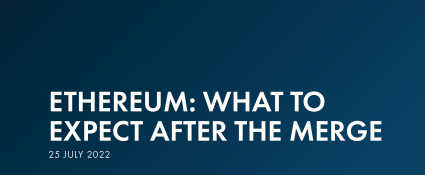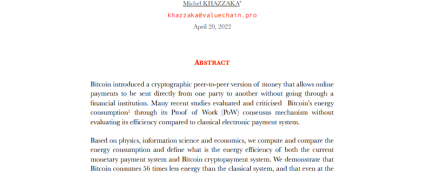Key Highlights
- Crypto Regulations are improving compared to five years ago.
- The crypto sector is still in its early stages but has yet to be very early.
- The real-world asset tokenisation will boost decentralised finance in the future.
- Institutions may choose long-term ETH staking.
- Zero-knowledge proofs, Rollups, and Layer 2 sidechains will help onboard more people with faster, cheaper and more efficient scalability solutions.
- Interoperability should be pushed forward.
- Crypto valuation.
The TOKEN2049 event recently concluded in Marina Bay Sands, Singapore, and it effectively gathered influential figures from the global web3 industry, including leaders, developers, entrepreneurs, and investors. This event provided a valuable platform for these experts to share their thoughts and experiences, particularly regarding the current state of the market, which involves both technological advancements and regulatory considerations. Despite the various challenges confronting the web3 sector, this event underscored the resilience and unity of the web3 community. It also highlighted the exciting potential for further innovations in this space, indicating that we are only beginning a transformative journey. Here are some key takeaways from the event worth noting.

The spotlight during discussions was on regulatory matters, and there was an optimistic outlook regarding achieving clearer regulations in the near future. The collapse of the FTX empire served as a wake-up call, prompting the U.S. government to expedite the development of regulatory frameworks. Panellists acknowledged the substantial progress made in regulation over the past five years, especially in response to recent black-swan events. While regulatory clarity may impact the crypto landscape, there’s a prevailing belief that cryptocurrencies will continue to be at the forefront of driving innovation in the financial system. Additionally, there’s a notable shift in Asia, with Hong Kong emerging as an early supporter of cryptocurrencies in terms of regulations.
In addition to regulatory discussions, the event featured valuable insights from experts like Willy Woo, who utilised on-chain analytics to assess our current position in the crypto space. According to Woo, we find ourselves in a stage that’s neither too early nor too late, suggesting that there are still growth opportunities, albeit not as substantial as in previous years. Other panellists, including Jenny Johnson from Franklin Templeton, drew parallels between crypto adoption and the early days of the TVs, the internet, cell phones, and more. Johnson emphasised that we are still in the early stages of crypto adoption, given the immense potential and the unfolding innovations and use cases offered by cryptocurrencies like Bitcoin and Ethereum. Furthermore, discussions with figures like Binance’s CZ and Balaji shared the fact that only 5% of the global population currently uses cryptocurrencies, indicating that many experts believe there is ample room for investment and growth in the crypto sector despite the challenges it faces.

Amidst these profound discussions, the event unveiled even deeper and highly compelling updates within the crypto sector. Notably, real-world asset (RWA) tokenisation has been quietly gaining momentum despite the year’s challenges. Panellists expressed optimism that RWA tokenisation could propel the sector forward by providing individuals access to assets that were typically not available to the masses. The RWA sector is seen as brimming with opportunities, and Maker (MKR) stands at the forefront as they prepare to introduce new technologies in the coming months. Furthermore, stablecoins garner interest from institutional investors, offering potential yields of 2% to 4%. This development opens up possibilities for further yields in the RWA category in the future. Maker’s Co-Founder Rune Christensen has also opened up discussions about future scalability challenges regarding all DAOs, proposing a solution to launch four subDAOs, namely Sakura, Spark, Quant, and Qual, which may play a crucial role in addressing future challenges, particularly as RWA adoption grows, ensuring the continued growth and sustainability of the decentralised finance ecosystem.
Lido and Rocketpool, two Ethereum staking projects, have discussed the state of staking ETH, which has been in high demand despite market uncertainties. They delved into the regulatory aspects affecting the staking industry, noting that some projects are considering imposing KYC/AML (Know Your Customer/Anti-Money Laundering) requirements for staking services. However, both Lido and Rocketpool, as proponents of decentralised liquid staking solutions, expressed reservations about implementing such requirements. Instead, they explored alternative approaches, like restricting access from certain countries using IP addresses. Another crucial topic was decentralisation, particularly Lido’s prominent role in the liquid staking sector. Lido argued that decentralisation arises from various nodes operated by different individuals worldwide. In contrast, Rocketpool advocated a more open approach, allowing anyone to host a node or stake to earn rewards through staking and MEVs (Miner Extractable Value). This discussion may also piqued the interest of institutional investors due to Ethereum’s low inflation rate and the potential for attractive yields, making it appealing for capital preservation or long-term investment.

In terms of innovation, Ethereum’s Rollups, Layer 2, and sidechains have made significant advancements, and the panellists foresee the next wave of a million users gravitating toward these solutions. These scalability technologies address Ethereum’s congestion problems while providing users with extremely fast and cost-effective transactions. Importantly, they maintain shared security with the Ethereum Main network. The panellists noted that these solutions are well-suited for various applications, including DeFi, gaming, and entertainment, with the potential for even more use cases in the future. The goal is to ensure that blockchain technology remains accessible and affordable, making these solutions likely to persist for at least the next five years.
Interoperability was a significant topic of discussion, involving projects like Cosmos, Polkadot, Axelar, Osmosis, and Optimistic Rollups. The consensus among panellists was that individual projects, especially those in the DeFi space, should have their own blockchains connected to the main chain, utilising protocols like Cosmos’ Inter-Blockchain Communication Protocol (IBC) or Polkadot’s Relay Chain (Parachain). This approach enhances interoperability while relieving congestion on the main blockchain. The panellists also explored the concept of liquidity rotation, allowing users to switch between different blockchains easily. However, challenges related to decentralisation, particularly the low number of node operators and validators compared to the Ethereum main network, still need to be addressed. Despite these challenges, continuous innovation is steadily resolving issues within the blockchain space.

Crypto valuation remains a subject of debate, with various methods used to assess assets like Bitcoin. One notable approach discussed is the Market Value to Realised Value (MVRV) ratio, which can indicate whether Bitcoin is overvalued or undervalued. Chris Burniske from Placeholder VC proposed that Bitcoin’s valuation should consider the cost of mining, suggesting that higher mining difficulty should lead to a higher valuation. He also highlighted Bitcoin and Ethereum as stores of value, with Ethereum having the added feature of being “ultrasound money” due to its ability to be consumed or burnt. Since cryptocurrencies possess distinct attributes, there will always be diverse valuation methods. Burniske emphasised that entering the market during bear markets, like the current one, has historically been advantageous based on past market cycles.
The event bustled with activity as businesses showcased their offerings, fostering collaboration and knowledge sharing. Attendees engaged in dynamic discussions, forming connections for potential partnerships and project growth. Notably, Binance and Huobi were absent, but Binance’s CEO shared insights virtually on OKX’s main stage. The event featured numerous reputable projects and businesses, although some had non-viable recycled ventures. JPEX, for instance, abandoned its booth following the arrest of its crew. Investment in the sector still requires caution but there is strong leadership and business that are emerging that will do for cryptocurrencies and blockchain, what the likes of Google, Facebook, Amazon etc did for the internet 20 to 25 years ago.
The discussions at the event underscore a key point: cryptocurrencies are here to stay despite the challenges they face in realising their full potential. Token 2049 reaffirms the legitimacy of the crypto market and its capacity to revolutionise the financial system, fostering a more decentralised paradigm. Moreover, the consensus aligns with the idea that we are still in the early stages of the crypto market, offering substantial growth potential and opportunities for refining innovations and regulations in the coming years. It’s reassuring to be part of a community that includes crypto leaders of all types, and we anticipate continuing this journey collectively.



